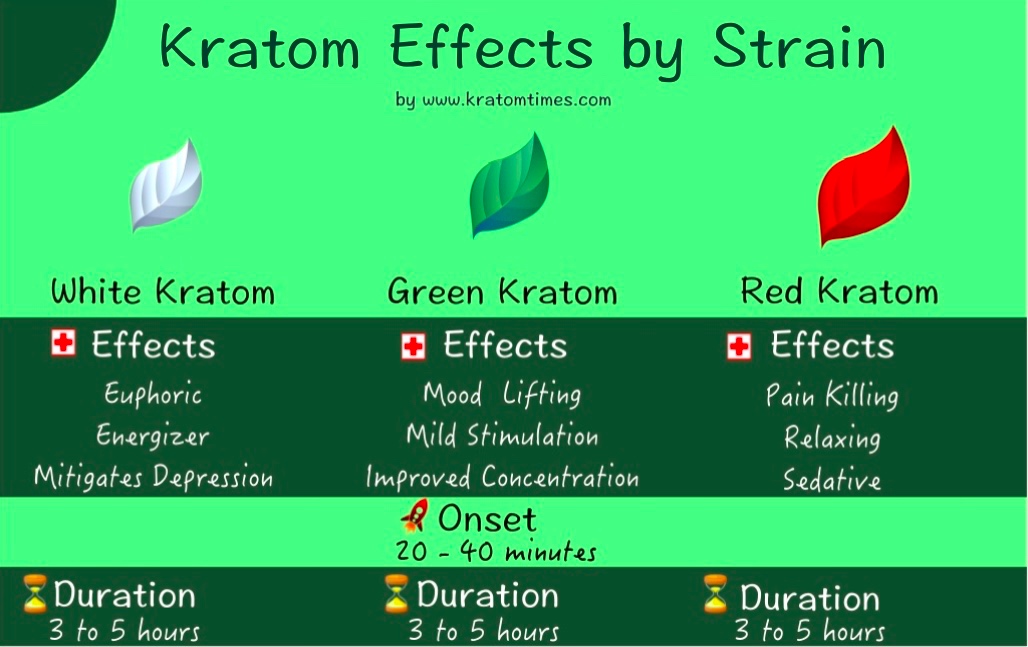Kratom has gained a lot of popularity in helping relieve the symptoms of opiate withdrawal. We will explore the process of withdrawal and why using kratom for opiate withdrawal is an excellent choice.
Opiates Dependence and Tolerance
All opiates and opioids act upon the delta and mu receptors of the brain, which are “prepared” to “receive” opiates. When opiate elements attach themselves to these receptors, the user will feel the effects.
After a long use, the brain cells that contain the opiate receptors become less receptive to opiates. This will result in the brain acting abnormally if it does not receive them. Consequently, the user will become dependent and will develop a tolerance. Therefore, he or she’ll need more amounts of opiates to feel the effects.
What is Opiate Withdrawal and How It Occurs

Opiate withdrawal refers to the symptoms occurring when an individual quits or reduce the intake of opiates after prolonged use. The withdrawal process will occur regardless of the opiate drugs that have been used. Both illegal and pharmaceutical prescribed opioids work exactly the same in your brain, so the withdrawal process will be also the same.
When your body gets used to opiates, there comes a moment when the opioid receptors cannot work properly without them. And the moment you stop taking them, your body will react negatively.
The time frame of the withdrawal symptoms to appear will vary depending on these factors:
- the type of opiates taken,
- the user’s metabolism
- and the dosage.
For some, the withdrawal symptoms may start within hours after quitting the opiates, while for others it may take some days. These factors will also impact the intensity and duration of the symptoms.
Body Areas Mostly Affected by Opiates
Because opiates affect different systems of the human body, withdrawal symptoms will impact the whole body. The main areas affected by opiates and by opiate withdrawal are:
- The brainstem: The brainstem controls the primal functions of the body, such as the heart rate or breathing. Under the influence of opiates, breathing and heart rate tend to slow. During withdrawal, the opposite will happen. The person’s breathing and heart rate will increase, resulting often in suffocation or tachycardia.
- The spinal cord: The spinal cord connects signals between the brain and the body. Opiates reduce pain signals, but as soon as they leave the system, the user will feel pain. Many individuals experience symptoms similar to those of flu, headaches, muscle aches and other types of pain.
- The limbic system: The limbic system acts as a control center for human emotions. Opiates make users feel more relaxed and «happy». During opiate withdrawal, it is common to experience episodes of anxiety, stress, and insomnia.
Digestive and intestinal upsets or ailments, such as stomachache or diarrhea, are also usual symptoms of opiates withdrawal.
Why Is It Helpful to Use Kratom for Opiate Withdrawal?
It is natural that people who are suffering from withdrawal symptoms seek out for something that helps them to mitigate the symptoms. And kratom is one of the best allies in coping with withdrawal symptoms.
Kratom active elements are mostly alkaloids, such as mitragynine, mitraphylline or 7-hydroxymitragyine. Kratom alkaloids affect opiate receptors in the same way opiates do, but with the great difference that kratom is not an opiate. It hA analgesic, relaxing or sedative effects without perpetuating the opiates dependence.
If possible, it is ideal that you start taking kratom during the first stages of withdrawal, especially before the vomiting begins. Vomiting, a very common symptom in withdrawal, will make it very difficult to keep kratom down in your stomach (and therefore in your body). If your body cannot absorb it, kratom will not have any effects in your system. That is why it is advisable that you have kratom at hand and start using it at the same time the withdrawal process begins.
Picking the Right Kratom Strain for Opiate Withdrawal
There are people who find some symptoms more bothersome than others. You can find different types of kratom strains. Each of them has different properties and effects:
- Red kratom strains have relaxing, sedative and pain relief properties.
- White kratom strains, on the other hand, provide euphoric effects.
Therefore, you should choose the kratom strain depending on the symptom (or symptoms) that you find most upsetting. Check our table below to know the kratom effects by strain or visit our post about kratom effects.

Many individuals who use kratom for opiate withdrawal find it very helpful to make a mix of red strains (like Red Thai or premium Bali kratom), commonly used for pain relief and anxiety or stress, and green strains (Maeng Da) with more energizing, euphoric effects.
Correct Dosage of Kratom for Opiate Withdrawal
The proper dosage of kratom for opiate withdrawal will vary depending on the opiate or opioid that was used, the number of opiates taken and the potency of the symptoms. In any case, it is recommended to start with a moderate dosage (2-4 grams) of kratom powder. Wait for 30 minutes until you start feeling the kratom effects and take another gram of kratom. Wait for other 30 minutes and check the effects. If necessary, take one more gram and repeat the process until you get the appropriate dosage to mitigate the opiate withdrawal symptoms.
When you have determined the adequate dosage for the withdrawal symptoms, you can use that dosage throughout the withdrawal process. When the withdrawal symptoms start to fade, you can gradually stop taking kratom.
Kratom Tolerance and Withdrawal
While kratom is not considered addictive (kratom addiction is generally considered only mental), your body can build up a tolerance to kratom and some users experience an uncomfortable withdrawal when quitting kratom.
In order to prevent tolerance and withdrawal, it is wise to avoid taking kratom every day. Also, you should wean off kratom gradually, decreasing the dosage and the frequency rather than quitting all of a sudden.


